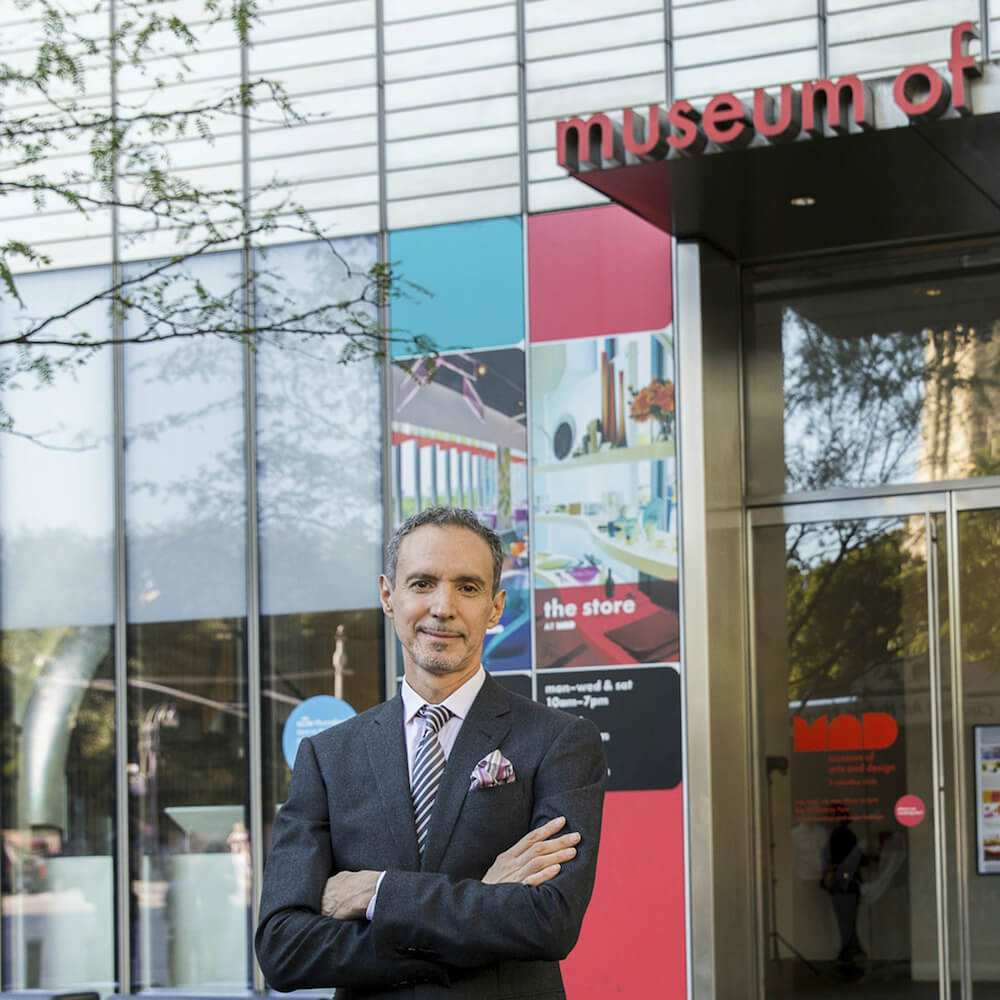Welcome to NewsFile, our weekly round up of news from the worlds of contemporary ceramics and contemporary ceramic art. We come to you today with a new chapter in the drama of the Museum of Arts and Design, as their newly-minted director calls it quits a few months into the job. From Cfile Chief Garth Clark:
How about a revolving door to the director’s office at the Museum of Arts and Design. The headline above also points to the unfortunate acronym for this institution. No, the director is not insane maybe just the opposite. New York Times reports, “A mere five months after becoming director of the Museum of Arts and Design, Jorge Daniel Veneciano is stepping down on Jan. 31, the museum announced on Thursday.
Like all who leave museums or are booted (we don’t know yet which it was) he “will shift his focus to writing and consulting at the intersection of cultural policy, immigrant rights and civic engagement.”
In an interview, the museum’s chairwoman, Michele Cohen, who will serve as interim director, said: “We would have hoped it would have lasted longer. But we’re respecting his decision to pursue other things. We’ve done this before but hopefully we don’t have to do it again.”
Mr. Veneciano, with a respected track record as an administrator and fund-raiser, came to the museum in October, after just two years as director of El Museo del Barrio. He succeeded Glenn Adamson, who was hired at the Museum of Arts and Design in 2013.
In Critical Craft Forum today the bluntly honest critic and craft theorist Jenni Sorkin stated:
I am going to be super-polemical here. This is one bright spot in a week of terrible news. The MAD board had no business hiring this guy to begin with. He made zero effort to even see the wonderful spate of exhibitions the weekend of the Voulkos-Antemann-Hooven exhibition openings. Based just on a weekend’s worth my observations, he never had any investment in craft or its histories. The Museum of Art & Design board of trustees needs to re-invest in its own mission. Yes, directors need to raise money, but responsibility and investment in the collection, staff, and subject matter come first.
Word on the street is the MAD board is exceptionally difficult to deal with, micromanage every aspect of the museum, and from direct knowledge one even took against a guest curator and had him fired. And they are cheap. The streets may or may not be accurate but certainly it an apt description of the MAD and American Craft Museum boards I worked with for four decades in New York. Maybe the next act should be to fire the board and start over again?
— Garth Clark
Bioceramic Pajamas
Underarmor has come out with a set of sleepway that they claim reduces inflamation while you rest. Here’s the skinny from the American Ceramic Society:
Under Armour’s athletic recovery sleepwear is made from a fabric printed with ceramic particles that absorb the body’s heat and radiate it back as far infrared energy—which claims a variety of health benefits.
According to Under Armour’s website, “The soft bioceramic print on the inside of the garment absorbs the body’s natural heat and reflects far infrared back to the skin. This helps your body recover faster, promotes better sleep, reduces inflammation, and regulates cell metabolism.”
The apparel is now available for sale on Under Armour’s website, although it’s not cheap to restore your body while you sleep—individual items (tops and bottoms sold separately!) cost $80–$100.
Chinese Authorities Smash Phony Warriors
Knockoff Terracotta Warriors are on notice. From HyperAllergic:
China’s Lintong District is famed for its thousands of terracotta soldiers, found buried in the mausoleum of the country’s first emperor, Qin Shi Huang. Some trusting tourists, however, have been visiting fake sculptures instead of the authentic, 3rd century BCE ones. The sham warriors are preserved in a museum complex, each replicated and installed to form a scam attraction.
Authorities raided the site, located in the same area as the genuine terracotta army museum, on Wednesday, as Xinhua reported. There, they destroyed the display, which featured more than 40 copies of the warriors standing in a 600-square-meter (~6,500-square-foot) area — an exhibition that was probably pretty disappointing for any visitor who’s seen pictures of the intimidating army of funerary sculptures. At that location, you’ll also find an impressive gathering of terracotta horses and chariots, all created to guard the emperor in his afterlife.
Renders of the Museum of Hospitality
This brick building initially puzzled us, because we thought it was a monument to the hotel industry. Instead, the Museum of Hospitality commemorates the country’s history regarding refugees. From ArchDaily:
The ‘Museum of Hospitality’ acts as an exhibition pavilion next to the current monument. It tells the story of the Belgian refugees during World War I with the intention of drawing parallels to today’s refugee crisis as well. It will stand as a reminder to future generations of the importance of providing hospitality to those in need, said the architects on a press release.
Do you love or loathe these missives from the worlds of contemporary ceramics and contemporary ceramic art? Let us know in the comments.








Add your valued opinion to this post.